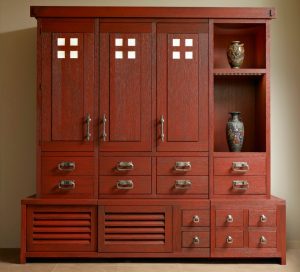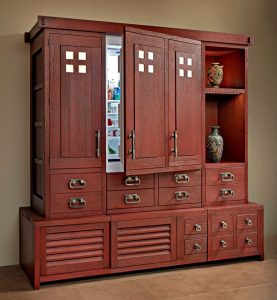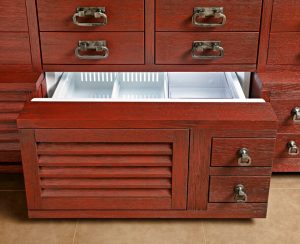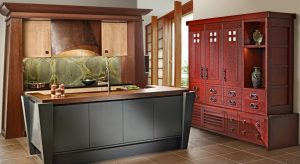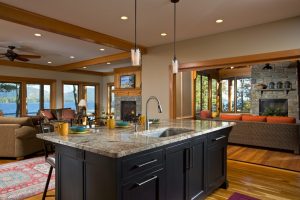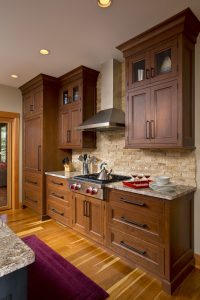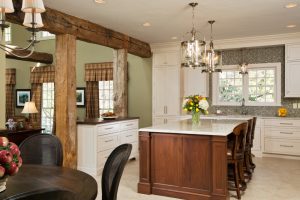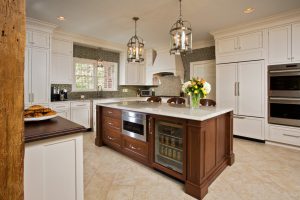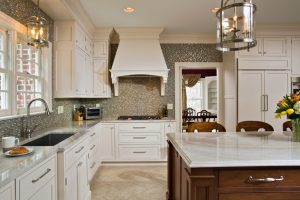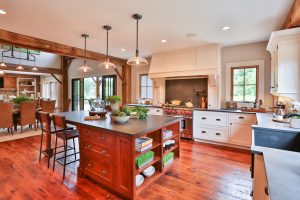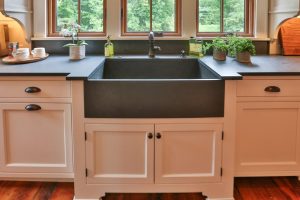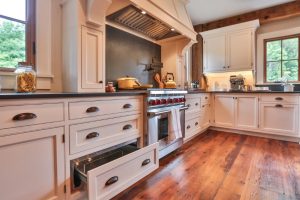Appliance Panels: An elegant subterfuge
As the walls between kitchens, dining rooms and living rooms have come down over the past three decades, it’s become important to a growing number of families that the view from each section of the wide open space is harmonious.
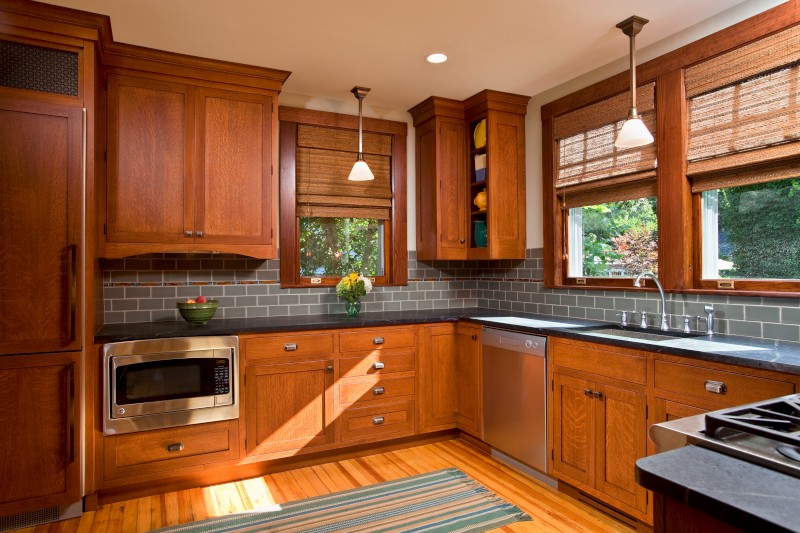
Coordinating appliance panels on the refrigerator/freezer (on the left) blend seamlessly with quarter-sawn oak cabinetry. The woodwork was chosen to complement an Arts & Crafts bungalow’s existing features.
For Teakwood Builders’ clients, that has meant an increasing emphasis on making sure the cabinets and appliances in the kitchen are as elegant as the woodwork in the dining and living rooms.
While the pink Frigidaire may be a retro delight for some, others opt to use custom appliance panels to give their refrigerators and dishwashers a furniture-like chic.
“There are some places where you want stainless steel, but with more and more floorplans being open, there are times when you’re staring straight from your living room into the kitchen,” said Teakwood Builders’ designer Eva Andersen. “Appliance panels offer a much more custom, finished look.”
Paneled appliances also increase the design options for adding refrigeration units in the bedroom, wine cellar, exercise room and den – without sacrificing visual style.
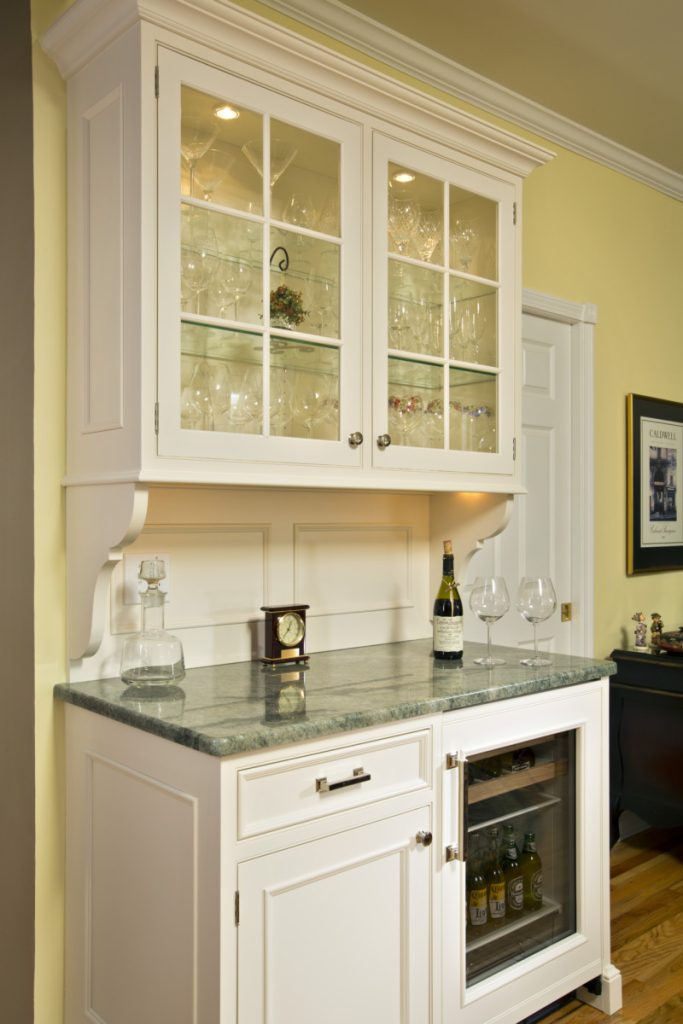
The bar in this kitchen has a custom panel on the panel-ready Sub-Zero beverage center.
The trend to disguise an appliance – also known as appliance integration – heated up in the 1990s, but took a quick backseat when professional grade-ish stainless steel appliances became the fad of choice at the turn of the century. After nearly 20 years of wiping fingerprints and smears off those shiny refrigerators, many homeowners are gravitating to a warmer, less fussy vibe, and spending as much time lounging at comfortable seating in the kitchen as they do cooking.
More manufacturers are offering panel-ready appliances, allowing clients a broad array of choices for colors and materials, and a more custom look to integrate their designs. About 90 percent of the clients who custom panel their appliances choose the dishwasher to keep an unbroken visual line under the counter, Andersen said. About half of them panel under-the-counter beverage centers, and a third panel the refrigerator.
- This mizuya, or kitchen tansu, stores more than cups and teapots.
- Clad in 19th-century-esque Asian serenity is a full refrigerator…
- …and a pull-out drawer freezer.
- Kitchen tansu by QCCI Custom Cabinetry. Photos by Simone Associates
- Blessed with spectacular lakeside views, this family wanted to keep the kitchen and lounging areas open to each other, while keeping the feeling of the kitchen warm and rich. The dishwasher is artfully hidden by matching panels to the right of the sink in this island.
- The refrigerator and freezer drawers, on the left, become things of beauty, as well as utility.
- “This home originally had a very, very dark kitchen, and the client wanted everything lighter and brighter. And she had a very large, angular kitchen island, so we redesigned it to have smaller island, with a second island which functions as a serving area to break up the kitchen and great room.
- Custom panels help the French-door Sub-Zero 42-inch refrigerator and dishwasher blend with the cabinetry. To create an entertaining area separate from the cooking zone, the clients opted for a hutch across from the breakfast table.
- The seating faces the great room “which has a to-die-for fireplace,” Andersen said.
- This home, created from a barn that was taken apart and moved to a more advantageous location, needed clean, white lines to contrast with the intense expanses of flooring reclaimed from barn wood.
- The dishwasher (to the right of the large apron sink) is indistinguishable from the other cabinetry.
- The cabinetry, including the warming drawer panel, is maple painted antique white, giving this farmhouse kitchen a tidy, harmonious feeling. This kitchen design by Teakwood Builders designer Eva Andersen and Brett Balzer of Balzer+Tuck Architecture won the Northeast Regional Award in the 2013-2014 Sub-Zero and Wolf Kitchen Design Contest.
\
